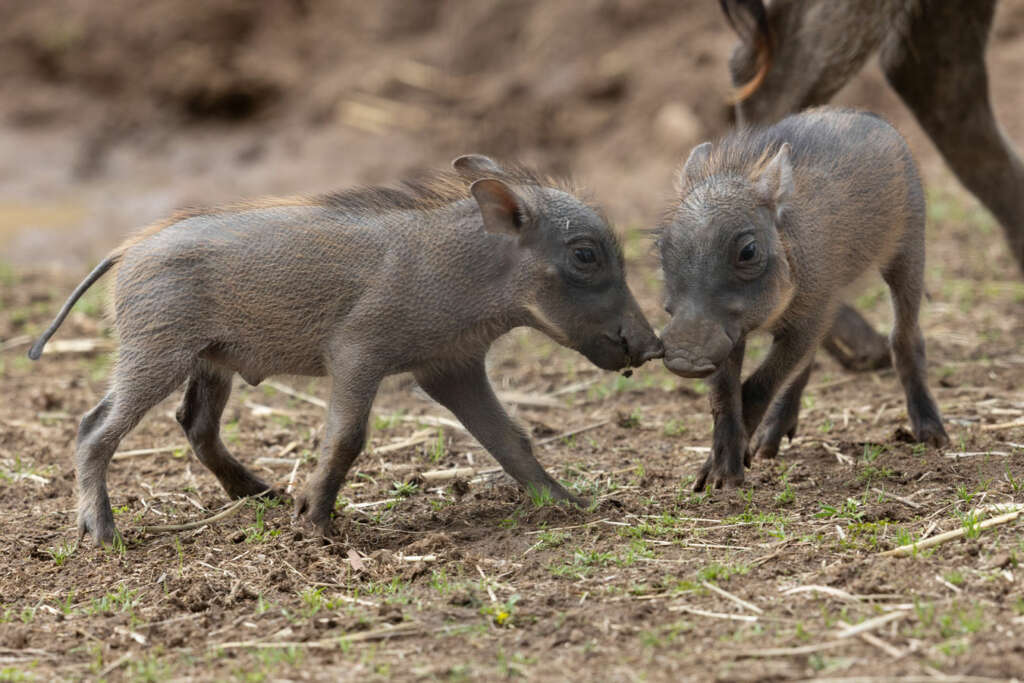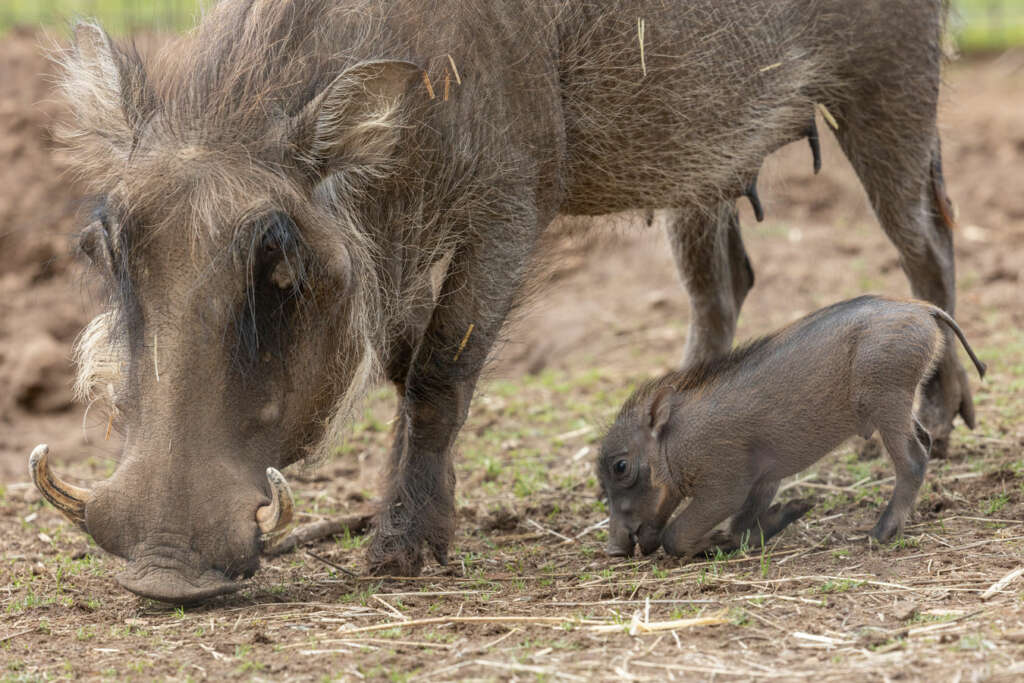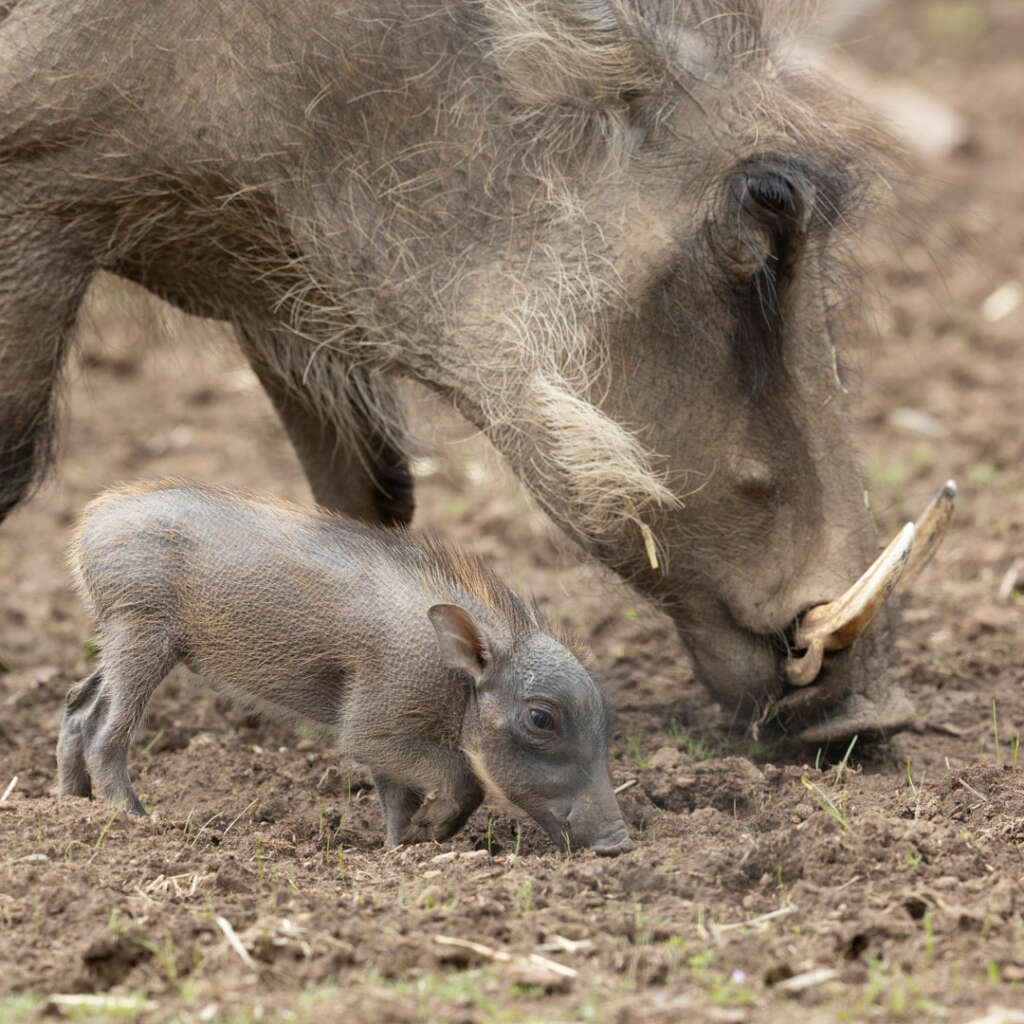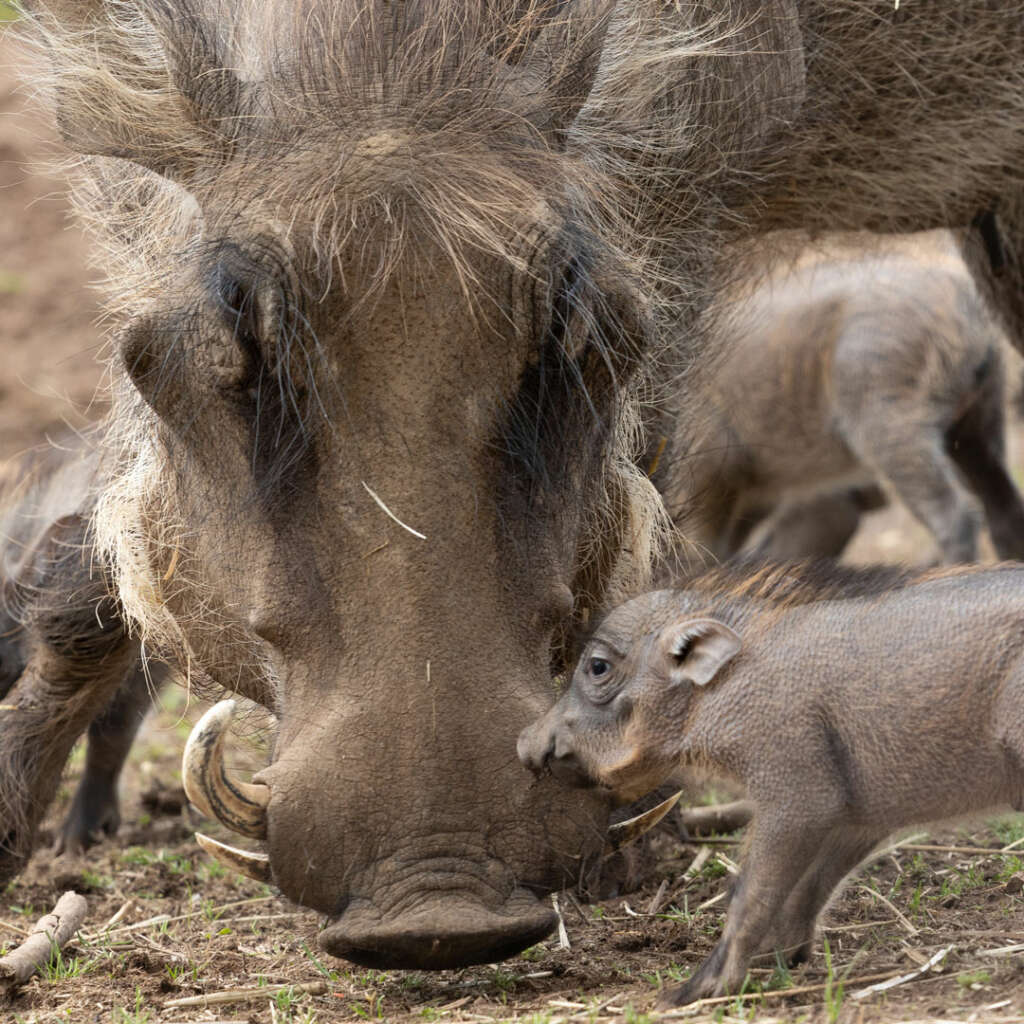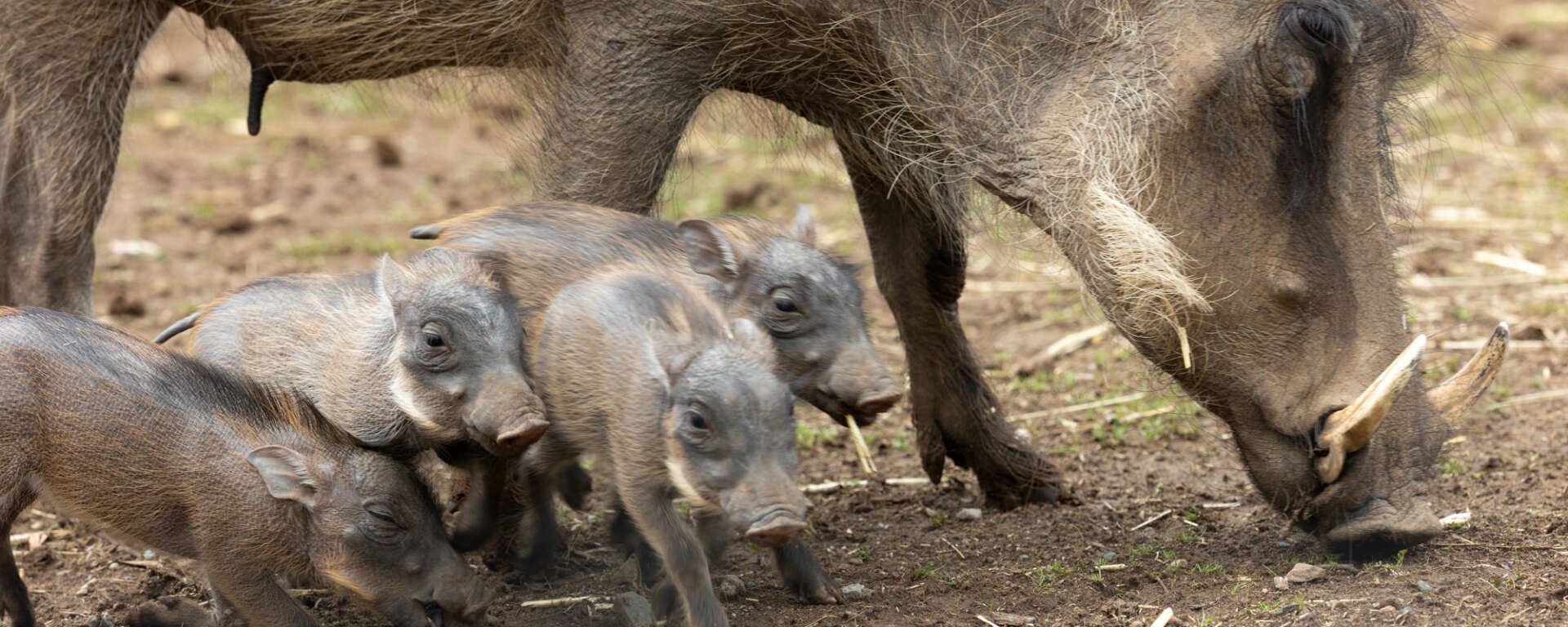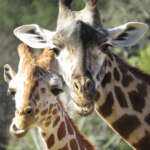What’s brown, bald with four tiny, tufted tails? You guessed it – 4 warthog babies!
We are thrilled to announce the birth of four bouncing baby warthog piglets, or as we like to call them, warthoglets! Mom and Dad (Njeiri and Pig Newton) are so proud of their three boisterous boys and gregarious girl, born at Safari West in early April. The timing could not have been better as our warthogs moved into a brand-new habitat in February, just in time to get their home ready for their new family! Njeri busied herself building a cozy nest out of grass and straw, and the new piglets spent the first few weeks of their lives snuggling in the nest. But, unlike their human counterparts, our warthoglets are ready to face the world not too long after being born. With their eyes open from birth, they start to leave the nest and explore after about 10 days, which is exactly what we witnessed. “Njeri is very protective of her litter and is doing a great job caring for her newborns,” stated Nikki Smith, animal caregiver at Safari west. “The three male and one female piglets are nursing regularly and appear to be thriving.” We love watching the warthoglets zipping around, exploring, and playing with each other as they get more comfortable with the habitat and their amazing new world. We invite you to come out and see these energetic little rascals in action with your own eyes!
More about Warthogs – Mark Pressler
Warthog piglets weigh only one to two pounds at birth, about 1% the size of their mom! The most common litter size is two to three piglets, but litter sizes can range anywhere between one and eight piglets. Warthog females have four mammary glands, so with our litter size of four, each piglet gets to nurse from its own mammary gland! We believe fewer nursing disputes between piglets that would occur with a larger litter size probably makes life a little easier for mom early on. The warthog piglets start eating solid foods at about two to three weeks of age and are fully weaned by the time they are five months old.
Photos by Mark Pressler
